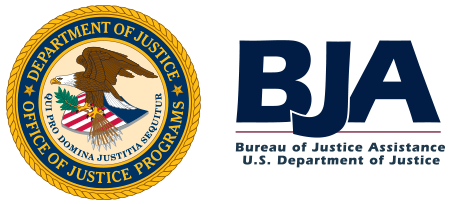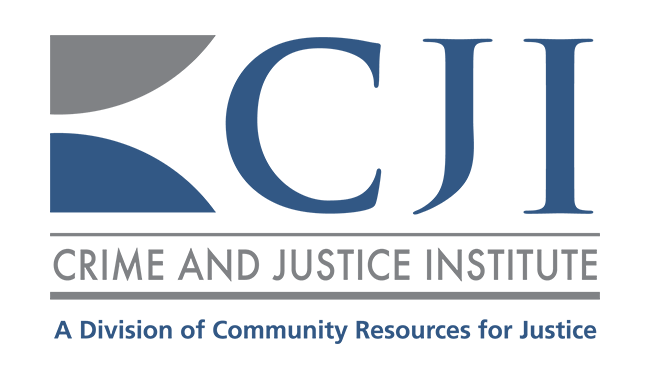South Dakota Justice Reinvestment Initiative

The prison population in South Dakota reached an all-time high in 2012 and was expected to increase by 25 percent over the following decade.1 To manage this projected growth, South Dakota leaders anticipated needing to build and operate two additional prisons, which would cost the state an estimated $224 million over 10 years.2
In response to this concern, Governor Dennis Daugaard, Chief Justice Gilbertson, and a bipartisan group of legislative leaders created the South Dakota Criminal Justice Initiative Work Group (Work Group) as part of the Justice Reinvestment Initiative (JRI) with assistance from the Crime and Justice Institute. Supported by The Pew Charitable Trusts and the Bureau of Justice Assistance, a component of the Department of Justice’s Office of Justice Programs, the Work Group was charged with issuing policy recommendations to improve public safety by investing in strategies proven to reduce recidivism, hold individuals accountable by strengthening community supervision, and reduce corrections spending and focus prison space on people charged with violent, serious, and repeat offenses.3 The Work Group analyzed South Dakota’s system and released a final report detailing its findings and recommendations in November 2012.4
The Public Safety Improvement Act (SB 70) included the Work Group recommendations and was signed into law in February 2013.5
After enacting SB 70, South Dakota took steps to slow the growth of its prison population, resulting in the delay of new construction.6 The state also created opportunities to improve community supervision, including allowing people to earn early discharge and expanding community treatment options.7,8
South Dakota’s JRI goals included:
1. Hold people more accountable by strengthening community supervision.
2. Reduce corrections spending and focus prison space on those who commit violent offenses and those who chronically offend.
3. Improve public safety by investing in programs, practices, and policies that have been proven to reduce recidivism.9
To date, South Dakota has achieved the following:
- SB 70 helped reduce South Dakota’s projected prison population, saving taxpayers over $28 million in operating and capital costs by the end of 2018. This population reduction also delayed the need for South Dakota to build two new correctional facilities.10
- Through SB 70’s earned discharge credits, people compliant with the terms of their probation or parole supervision collectively earned 7,547 years off supervision time between FY14 and FY18.11
- In 2014, the state invested $3.2 million to expand and provide substance use and cognitive behavioral treatment programs for people on probation and parole. This investment continued in subsequent years.12
1. Hold people more accountable by strengthening community supervision.
South Dakota’s Criminal Justice Initiative Work Group identified that more people were failing on supervision, parole revocations were increasing, and a high number of people were entering prison for probation failures.13,14 The Work Group’s findings made clear the need for supervision improvements and resulted in the adoption of policies to expand treatment and implement practices to make supervision officers’ interactions with clients more effective.15



2. Reduce corrections spending and focus prison space on those who commit violent offenses and those who chronically offend.
The 2012 analysis from the South Dakota Criminal Justice Initiative Work Group demonstrated that, due to the increase in the prison population, the state would have needed to construct two new prisons at a cost of $224 million in capital and operating costs over the following decade.22 The Work Group found that the majority of people admitted to prison were there for a nonviolent offense, with individuals convicted of drug possession being the most common offense within this group.23 SB 70 aimed to slow the projected prison growth with more effective community-based interventions for people with nonviolent convictions while focusing prison beds on those with violent offenses.24



3. Improve public safety by investing in programs, practices, and policies that have been proven to reduce recidivism.
The Public Safety Improvement Act established an oversight council to monitor and report performance and outcomes related to the policies set forth in the act.40 SB 70 required the establishment of an oversight council to monitor and evaluate implementation of reforms for five years.41 The oversight council released annual reports from 2014 to 2018.42




Additional Accomplishments and Information Related to Reforms
- SB 70 created an alternative supervision option, HOPE Probation, for those who use drugs and alcohol, with the goal of holding people accountable while keeping them in the community.52,53 The number of people participating in HOPE Probation increased from 9 in FY14 to 132 in FY18.54
- The incarceration rate dropped from 416 per 100,000 residents in 2012 to 362 per 100,000 in 2020.55,56
- SB 70 authorized the Department of Corrections, in cooperation with the Department of Tribal Relations, to develop a tribal parole pilot program to supervise people on parole living in tribal communities.57 In 2012, 44 percent of those returning to prison for a parole violation identified as Native American, although they comprised 24 percent of the overall parole population.58 In FY13, the state appropriated $250,000 to implement the tribal parole pilot program.59 Through a collaboration with the Sisseton-Wahpeton Oyate tribe, the program authorized the appointment of a tribal member parole agent and the adoption of a team approach supported by culturally-informed practices.60 After the program achieved success in its first two years with increases in successful parole completion and declining rates of absconding, the state and the Sisseton-Wahpeton Oyate signed an agreement to make the pilot permanent.61
- The legislature appropriated funds in 2022 for the first steps toward constructing a women’s prison and created an incarceration construction fund to be used for capital construction or improvement of prisons and jails. In 2023, HB 1017 was signed into law authorizing the Department of Corrections to purchase property and contract for planning and site preparation to construct a new prison. Twenty-five million dollars from the general fund and $27 million from the incarceration construction fund was appropriated for these purposes.62
Endnotes
- The Urban Institute, Assessing the Impact of South Dakota’s Sentencing Reports (Washington, D.C.: 2016), https://www.urban.org/sites/default/files/publication/80106/2000762-Assessing-the-Impact-of-South-Dakota%27s-Sentencing-Reforms-Justice-Reinvestment-Initiative.pdf.
- The Pew Charitable Trusts, South Dakota’s 2013 Criminal Justice Initiative: Legislation to Improve Public Safety, Hold Offenders More Accountable, and Reduce Corrections Spending (Washington D.C.: 2013): 1, https://www.pewtrusts.org/~/media/legacy/uploadedfiles/pcs_assets/2013/psppsd2013criminaljusticeinitiativepdf.pdf.
- South Dakota Criminal Justice Initiative, Final Report (Pierre, SD: 2012): 3. https://boardsandcommissions.sd.gov/bcuploads/PublicDocs/Final%20Report%20and%20Recommendations,%20November%202012.pdf.
- Ibid.
- Public Safety Improvement Act Oversight Council, 2014 Annual Report (Pierre, SD: 2014): 2.
- Ibid. at 3.
- Ibid. at 13.
- South Dakota Governor’s Office, South Dakota Public Safety Improvement Act: Governor’s Budget Recommendations + Requested FY 2014 Ongoing Costs (Pierre, SD), https://boardsandcommissions.sd.gov/bcuploads/PublicDocs/Cost%20Breakout%20-%20Ongoing,%20Fiscal%20Year%202014%20.pdf.
- South Dakota Criminal Justice Initiative Work Group, Final Report and Recommendations (Pierre, SD: 2012): 7, https://doc.sd.gov/documents/about/CJIReportDraftNov2012FINAL11272012.pdf.
- Public Safety Improvement Act Oversight Council, 2018 Annual Report (Pierre, SD: 2018): 1 https://boardsandcommissions.sd.gov/bcuploads/PublicDocs/BC%202018%20PSIA%20Annual%20Report.pdf.
- Ibid. at 13.
- The Pew Charitable Trusts, South Dakota’s 2013 Criminal Justice Initiative, 6.
- Ibid. at 5.
- Ibid. at 5.
- Public Safety Improvement Act Oversight Council, 2014 Annual Report, 6.
- The Pew Charitable Trusts, South Dakota’s 2013 Criminal Justice Initiative, 7.
- Ibid. at 7.
- Ibid. at 7.
- Public Safety Improvement Act Oversight Council, 2018 Annual Report, 13.
- Public Safety Improvement Act Oversight Council, 2014 Annual Report, 7.
- Public Safety Improvement Act Oversight Council, 2018 Annual Report, 16.
- South Dakota Criminal Justice Initiative Work Group, Final Report and Recommendations, 3.
- Ibid. at 4.
- Public Safety Improvement Act Oversight Council, 2014 Annual Report, 2.
- The Pew Charitable Trusts, South Dakota’s 2013 Criminal Justice Initiative, 1.
- Ibid. at 1.
- Ibid. at 3.
- Ibid. at 8.
- Ibid. at 8.
- Ibid. at 8.
- The Pew Charitable Trusts, South Dakota’s 2013 Criminal Justice Initiative: Legislation to Improve Public Safety, Hold Offenders More Accountable, and Reduce Corrections Spending (Washington D.C.: 2013): 8, https://www.pewtrusts.org/~/media/legacy/uploadedfiles/pcs_assets/2013/psppsd2013criminaljusticeinitiativepdf.pdf.
- PSIA Annual Report 2018, 3.
- South Dakota Criminal Justice Initiative Work Group, Final Report and Recommendations, 3.
- South Dakota Department of Corrections, 2022 Statistical Report (Pierre, SD: 2023): ii, https://doc.sd.gov/documents/SDDOC%202022%20Statistical%20Report.pdf.
- Public Safety Improvement Act Oversight Council, 2018 Annual Report, 7.
- South Dakota Office of the Attorney General, Attorney General Jackley’s 2018 Legislative Package (Pierre, SD: 2018), https://atg.sd.gov/OurOffice/Media/pressreleasesdetail.aspx?id=1936#gsc.tab=0.
- NBS News, South Dakota’s ‘Meth. We’re on it.’ Campaign is funny but state officials say the meth problem is deadly serious. https://atg.sd.gov/OurOffice/Media/pressreleasesdetail.aspx?id=1936#gsc.tab=0.
- Public Safety Improvement Act Oversight Council, 2014 Annual Report, 12 https://mylrc.sdlegislature.gov/api/Documents/RequiredReport/125118.pdf?Year=2017.
- Public Safety Improvement Act Oversight Council, 2018 Annual Report, 14.
- South Dakota SB 70 (2013).
- The Pew Charitable Trusts, South Dakota’s 2013 Criminal Justice Initiative, 9.
- Public Safety Improvement Act Oversight Council, 2018 Annual Report,1.
- Ibid. at 7.
- South Dakota Department of Social Services, Targeted Services for Justice Involved Adults: Service Coverage Map. https://dss.sd.gov/formsandpubs/docs/BH/CJI_flyer.pdf.
- Public Safety Improvement Act Oversight Council, 2018 Annual Report, 17.
- South Dakota SB 70 (2013).
- Ibid.
- The Pew Charitable Trusts, South Dakota’s 2013 Criminal Justice Initiative: Legislation to Improve Public Safety, Hold Offenders More Accountable, and Reduce Corrections Spending (Washington D.C.: 2013): 6.
- The Pew Charitable Trusts, South Dakota’s 2013 Criminal Justice Initiative: Legislation to Improve Public Safety, Hold Offenders More Accountable, and Reduce Corrections Spending (Washington D.C.: 2013): 6, https://www.pewtrusts.org/~/media/legacy/uploadedfiles/pcs_assets/2013/psppsd2013criminaljusticeinitiativepdf.pdf.
- The Pew Charitable Trusts, South Dakota’s 2013 Criminal Justice Initiative, 6.
- Public Safety Improvement Act Oversight Council, 2018 Annual Report, Appendix 2, 10. Appendix 2 BC.pdf (sd.gov).
- South Dakota SB 70 (2013).
- South Dakota Criminal Justice Initiative Work Group, Final Report and Recommendations, 8.
- Public Safety Improvement Act Oversight Council, 2018 Annual Report, 15.
- South Dakota Criminal Justice Initiative Work Group, Final Report and Recommendations, 2.
- South Dakota Department of Corrections, 2022 Statistical Report, 4.
- South Dakota SB 70 (2013).
- Allison Shames and Ram Subramanian, Bridging the Divide: Improving Parole Outcomes for Native Americans in South Dakota (New York, NY: 2016): 2, https://www.vera.org/downloads/publications/Bridging-the-Divide-Parole-Outcomes-Native-Americans-South-Dakota-V.2.pdf.
- South Dakota Governor’s Office, South Dakota Public Safety Improvement Act: Governor’s Budget Recommendations + Requested FY 2013 One-Time Costs.
- The Urban Institute, Justice Reinvestment Initiative (JRI).
- Shames and Subramanian, Bridging the Divide, 6.
- South Dakota HB 1017 (2023).

BJA strengthens the Nation’s criminal justice system and helps America’s state, local, and tribal jurisdictions reduce and prevent crime, reduce recidivism, and promote a fair and safe criminal justice system. BJA focuses its programmatic and policy efforts on providing a wide range of resources, including training and technical assistance, to law enforcement, courts, corrections, treatment, reentry, justice information sharing, and community-based partners to address chronic and emerging criminal justice challenges nationwide. To learn more about BJA, visit https://bja.ojp.gov, or follow us on Facebook (https://www.facebook.com/DOJBJA/) and Twitter (@DOJBJA). BJA is part of the Department of Justice’s Office of Justice Programs.

The Crime and Justice Institute (CJI) has more than a decade of experience as a JRI technical assistance provider, supporting states through assessing strengths and needs, conducting data analysis, facilitating policy development, and assisting with implementation.
Acknowledgments
This brief was prepared by Barbara Pierce, Dr. Katie Zafft, Abigail Strait, Maureen Flanagan, Andy Tisdel, Nikki Miguel, Amanda Coscia, and Ashley Neufeld.
This project was supported by Grant No. 15PBJA- 21-GK-04350-JRIX awarded by the Bureau of Justice Assistance. The Bureau of Justice Assistance is a component of the Department of Justice’s Office of Justice Programs, which also includes the Bureau of Justice Statistics, the National Institute of Justice, the Office of Juvenile Justice and Delinquency Prevention, the Office for Victims of Crime, and the SMART Office. Points of view or opinions in this document are those of the author and do not necessarily represent the official position or policies of the U.S. Department of Justice.
Project Contact:
Barbara Pierce, Director of Justice Initiatives | CJI, comms@cjinstitute.org
